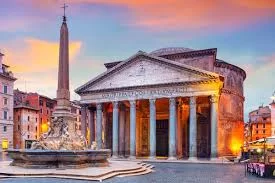1. Introduction to Rome's Historical Sites
Rome, the Eternal City, is an open-air museum where history comes alive through its stunning historical sites. As the heart of the Roman Empire, the city is home to some of the world’s most famous ancient landmarks, offering a fascinating glimpse into a civilization that shaped much of the modern world. From the grand ruins of the Colosseum to the elegant fountains of Baroque Rome, exploring the famous historical sites in Rome, Italy, is a journey through time that every history enthusiast and traveler must experience.
2. The Colosseum: Rome's Iconic Landmark
The Colosseum is arguably the most famous of all historical sites in Rome. This colossal amphitheater, built in the 1st century AD, once hosted gladiator battles, public spectacles, and mock sea battles. Today, it stands as a symbol of Roman engineering and the grandeur of the Empire. A visit to the Colosseum offers visitors a chance to walk through its ancient corridors and imagine the epic events that once took place. Don’t miss the view from the upper level, where you can appreciate the scale of the structure and the surrounding Roman Forum.
3. The Roman Forum: Heart of Ancient Rome
Located just next to the Colosseum, the Roman Forum was the center of public life in ancient Rome. It was home to important government buildings, temples, and markets, making it the nucleus of Roman political and social activity. Visitors can wander through the ruins of this once-thriving marketplace and marvel at the remains of significant monuments like the Temple of Saturn and the House of the Vestal Virgins. Exploring the Forum offers a deeper understanding of how the Romans organized their daily life and governance.
4. The Pantheon: A Marvel of Ancient Architecture
The Pantheon, originally built as a temple to all Roman gods, is a stunning architectural feat that has withstood the test of time. Completed around 126 AD, the Pantheon’s dome remains the largest unreinforced concrete dome in the world. Visitors are amazed by the building’s perfect symmetry, the grand portico with its massive columns, and the eye-catching oculus at the center of the dome. The Pantheon is not only one of the best-preserved buildings from ancient Rome but also an awe-inspiring testament to Roman ingenuity and craftsmanship.
5. The Vatican: The Spiritual and Historical Center
While not strictly part of ancient Rome, the Vatican is an essential stop for anyone interested in Roman history. The Vatican is home to the Pope and the Catholic Church, as well as a treasure trove of art and architecture. The Vatican Museums house masterpieces from ancient Rome and Renaissance works by artists such as Michelangelo and Raphael. The Sistine Chapel, with Michelangelo's iconic ceiling frescoes, is a highlight. The Vatican’s St. Peter’s Basilica is an awe-inspiring site, with its grand dome and intricate artwork, offering visitors a chance to experience both the religious and historical significance of Rome.
6. The Trevi Fountain: A Baroque Masterpiece
The Trevi Fountain, one of the most famous fountains in the world, is a must-see historical site in Rome. Completed in 1762, the fountain is a magnificent example of Baroque architecture. Standing in the center of the piazza, the fountain depicts the god Neptune riding a chariot drawn by seahorses. Visitors often toss a coin into the fountain, hoping to return to Rome one day—a tradition that has made the Trevi Fountain a symbol of good fortune. It’s not just a popular tourist spot, but a testament to the Roman Baroque period’s influence on art and architecture.
7. Plan Your Visit to Rome's Historical Sites
Rome is a city rich in history and culture, with each historical site offering a unique perspective on the Roman Empire’s incredible legacy. To make the most of your visit, consider booking a guided tour that will take you through the major historical landmarks, from the Colosseum to the Vatican. You can also purchase a Roma Pass to save on entry fees and avoid long lines at popular sites. Want to dive deeper into the ancient history of Rome? Visit How to Travel the World for more tips and to plan your ideal Roman adventure!







